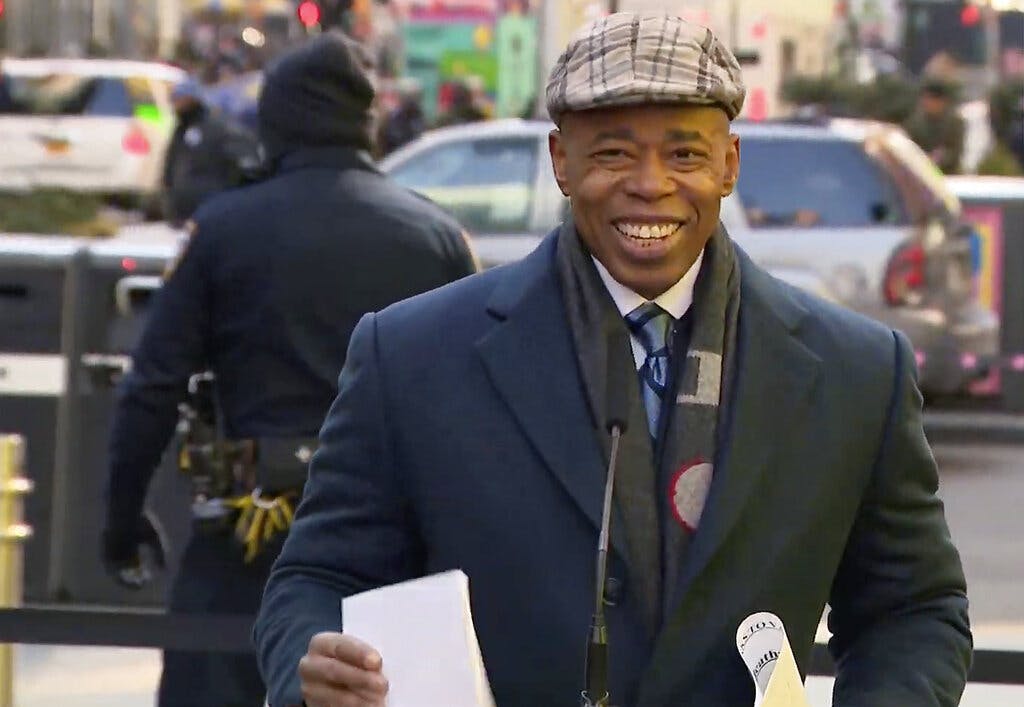A Welcome Return to Proactive Policing in New York City
The city’s leaders are beginning to consider the true complexities of crime, communities, and policing — the latter involving a delicate balance of trust, crime opportunities, and consequences.

New York City’s mayor and NYPD brass have decided it’s time to once again empower the police to proactively protect neighborhoods from danger and disorder.
Mayor Adams last week convened the NYPD commissioner, Keechant Sewell, and chief of department, Kenneth Corey, after an especially bloody weekend that left 29 New Yorkers wounded by gunfire.
Far from being anomalous, this carnage highlighted a devastating trend: there have been 284 shooting victims in the Big Apple so far in 2022 compared to 151 victims at this time in 2019.
After the meeting, top brass announced their commitment to focus on more quality-of-life offenses that are chronically connected to pockets of erupting violence. Chief Corey said the NYPD will return to targeting infractions such as public drinking, loud parties, dice games, open-air drug sales, littering, and subway fare evasion.
This strategy shift acknowledges that communities and their dynamics play a vital role in promoting and ensuring public safety. This idea is central to the concept shorthanded “Broken Windows,” which asserts the role that the presence of reliable and trusted law enforcement plays in this dynamic.
While NYPD energetically embraced “neighborhood policing” during Mayor de Blasio’s administration, there was a subtle shift away from the role that cops played in signaling that bad, destructive, harmful behavior is not acceptable in our communities.
For example, before Mr. de Blasio, conditions teams — a resource favored by precinct commanders for their effectiveness — were tasked with addressing low-level and quality-of-life crimes. They oversaw a period of sharp and continued decreases in all levels of crime. However, under Mr. de Blasio, these teams were dismantled in favor of Neighborhood Coordination Officers.
After that decision, crime rates rose — slowly at first, and then accelerated drastically since summer 2020 when anti-police sentiment, the resource-draining Covid pandemic, and laxer prosecution policies diminished and handicapped enforcement.
Furthermore, the dominant narrative of the past two years made it nearly impossible to reevaluate policing policies by asserting one simple relationship: cops versus communities. Basing criminal justice decisions on this single, faulty dynamic has been a disaster.
It has primarily hurt the city’s most vulnerable areas — those containing the 5 percent of streets that produce about 50 percent of the crime. New Yorkers living in these areas, largely black neighborhoods, stand to suffer far more than others when crime-fighting policies fail. Consider Brooklyn’s majority-black Brownsville, where shootings have risen by nearly 300 percent versus this date in 2019.
The coincident eruption of quality-of-life crime keeps minority communities from experiencing streets as safe as the most affluent areas of Manhattan, where private security resources can pick up the shortfall in policing.
Quality-of-life crimes are degrading our communities. Someone urinating on the street outside a school is a disturbing sight for local kids. Someone spray painting on a building is bad for rental values and retail businesses. And more serious offenses frequently spring from low-level ones.
Illicit dice games, for instance, are often precursors to shootings. Beyond these harms, this telltale disorder creates an atmosphere where individuals are emboldened to commit greater crimes, confident that no one is maintaining the rules of behavior. Police are the entity that represent an expectation of behaving appropriately and can enforce it.
The NYPD’s decision to shift de Blasio-era NCOs back toward the role formerly played by conditions teams suggests the city’s leaders are beginning to consider the true complexities of crime, communities, and policing — the latter involving a delicate balance of trust, crime opportunities, and consequences.
It doesn’t have to be cops versus communities. In fact, truly progressive criminal justice is led by neighbors who care about each other, their children, streets, and schools — and who feel they can trust officers to reliably intervene when danger or disorder threatens.
With luck, this is the beginning of an era that builds trust once again between New Yorkers and the only agency that represents the inviolability of their rights: police.
Critics including representatives from the Bronx Defenders and Legal Aid Society assert that these tactics will unfairly impact “Black and brown people.”
Yet according to a Manhattan Institute survey last fall, 61 percent of black residents in America’s fastest-growing cities want to empower cops to be more responsive to quality-of-life issues, such as graffiti, public urination, and littering.
It turns out that people of every skin color don’t want their communities treated like trash.

